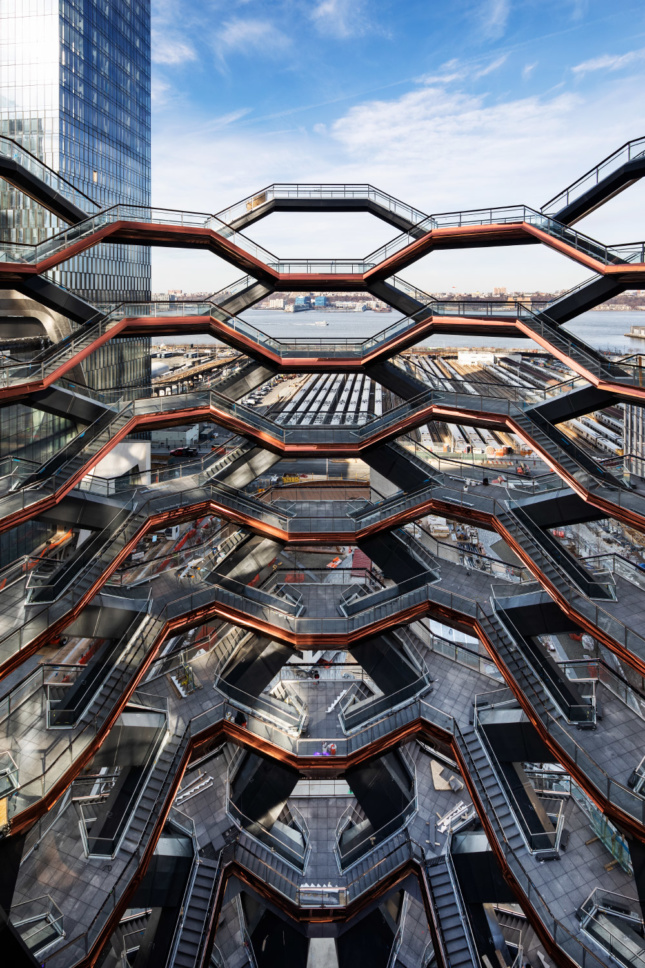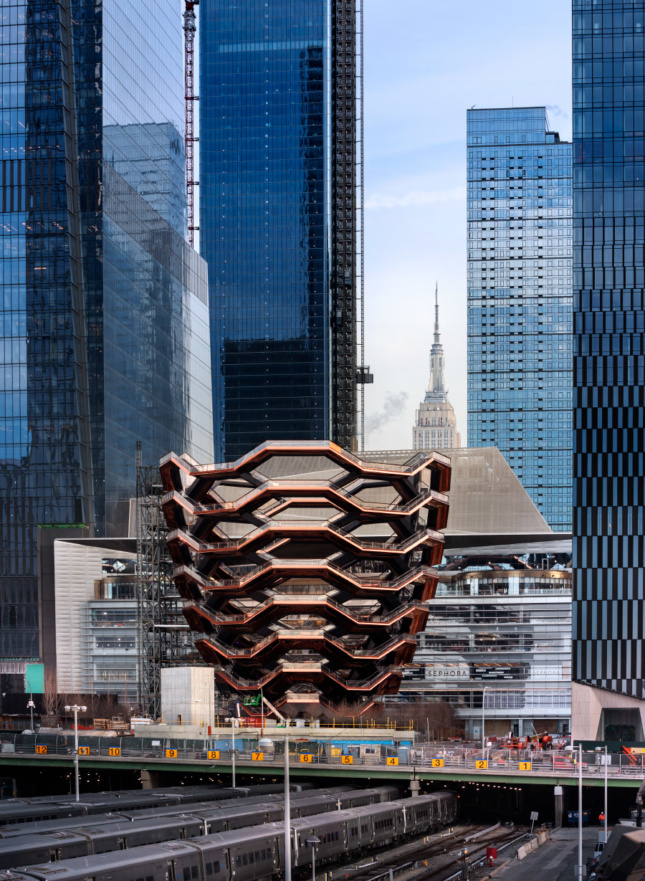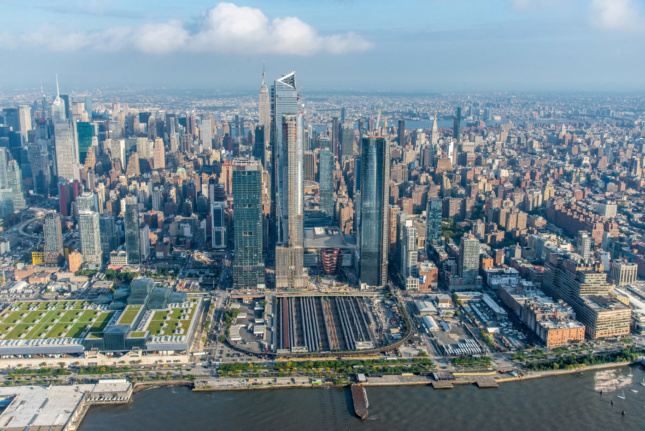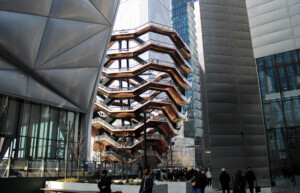As throngs of tourists and New York City residents descend on Manhattan’s far west side for the opening of Hudson Yards’ first phase, AN joined the first tour of the Thomas Heatherwick–designed Vessel (interested visitors can reserve free tickets).
Bill Pedersen, founding partner of Kohn Pedersen Fox (KPF), Thomas Woltz of landscape architecture studio Nelson Byrd Woltz, representatives from Heatherwick Studio, and Related Companies chairman Stephen Ross, who paid to construct the Vessel out of his own pocket, were also on hand to dive into the design behind the development.

With the first phase of Hudson Yards opening to the public today, plenty of ink has already been spilled over the new neighborhood’s “fortress-like” nature, the accusations that it intentionally and discordantly stands apart from the street grid and city as a whole, and that the development is a playground for the one-percent financed through $6 billion in tax breaks (though some might passionately dispute that characterization). Those points have been argued elsewhere.
What is definitely true is that the 11-million-square-foot, $16-billion first phase of Hudson Yards is now mainly open, or will open shortly, and it’s likely to draw shoppers, tourists, and High Line hikers to what was formerly an open-air staging area for the Long Island Railroad. The second phase of the megaproject over the still-uncovered western railyard will hold five more residential towers and a commercial project from architectural heavy hitters like Herzog & de Meuron, Frank Gehry, Santiago Calatrava, and Robert A.M. Stern. Related expects that infrastructure work on the second phase will begin next year before the site is decked over.

Vessel, Heatherwick’s $150 million not-quite-a-sculpture, not-quite-a-building sits at the center of Hudson Yards’ Public Square and Gardens. The climbable installation is made up of 154 flights of stairs connected to 80 landings, and it balloons up to 150-feet-wide at its 150-foot-tall summit.
As project architect Stuart Wood explained, Vessel (explicitly not “the Vessel”—although Related will rename the structure later, anyway) was designed to be open in its programming while not “jamming up” the plaza.
“The project was built entirely from staircases and landings. They’re public, publicly accessible, free to use spaces. It’s non-prescriptive. That was absolutely our intent from the outset. This should be a project that is open to interpretation. It’s open to different natures of use.”

The underside of the piece is clad in warm, reflective metal paneling that distorts the glass towers around it and brings a sense of liveliness to the “sculpture” as more visitors gather at its base. As visitors scale Vessel, climbers see themselves reflected overhead as the panels act as mirrored ceilings; that interactivity is intentional. On the topside, Heatherwick has used wood railings, darkened steel, and stone for the steps and landings in reference to the site’s industrial heritage.
With a form so often compared to a beehive or garbage can by outside observers, actually entering Vessel produces an unusual effect. Standing in the sculpture’s base feels akin to entering a towering atrium, with the glass handrails resembling windows. Climbing the structure’s numerous staircases, at least when devoid of the crowds that will surely descend on it after the official opening, felt slightly dangerous. The view of Hudson Yards, the Shed, shops and dining areas, and across the Hudson River, open up towards the top, and might induce the same sense of vertigo found on construction sites.
For mobility impaired visitors, Heatherwick Studio has added a glass elevator that travels along a curving track along Vessel’s inside rim, though it only stops at one landing per story.

The plaza in which Vessel sits is elliptical and gently spirals out to each of the buildings on the site, a decision that Nelson Byrd Woltz came to in tandem with Heatherwick Studio. As such, it serves as the epicenter of Hudson Yards’ public space, and its central location in the neighborhood’s main plaza visually cements that status.
Vessel, for better or for worse, is intrinsically at home in Hudson Yards and wouldn’t fit anywhere else in the world. And even if it wasn’t, as Wood explained, Related has copyrighted the design.











